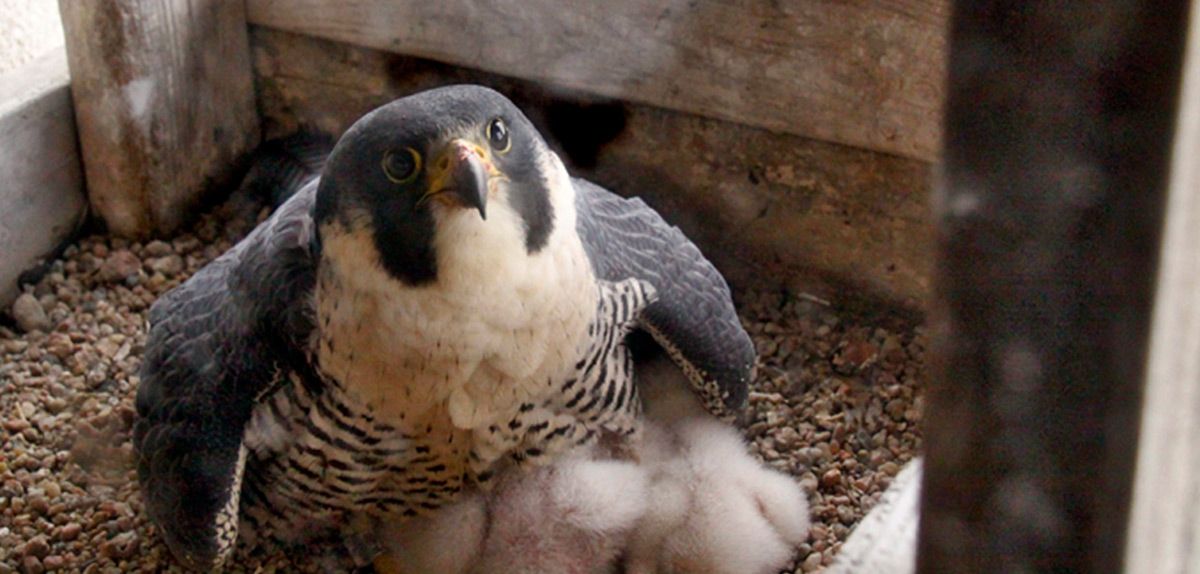
Falcon Facts
About Peregrine Falcons
Discover the characteristics that set this bird of prey apart.
Peregrine Falcon Info
Scientific Name
Falco peregrinus – From Latin meaning “hook-shaped” and “wander.”
Description
Medium-sized raptor slightly smaller than an American Crow.
Coloring
Adults have slate blue-gray black wings and whitish underparts marked with black barring. Juveniles are brown above, with fairly bold vertical brown streaks on otherwise whitish underparts. All peregrines have a dark “mustache” below their eyes.
Species
The peregrine falcon (falco peregrinus) is a species of the order Falconiformes, family Falconidae, which includes 39 species of falcons. The peregrine is one of six falcons found in the United States. The others are Gyrfalcon, Prairie Falcon, Merlin, American Kestrel and the Aplomado Falcon.
Measurements
Body measures 15-20 inches with a 40-inch wingspan and weighs one to two pounds.
Speed
More than 180 miles per hour in a dive and level flight of 62 miles per hour. Video
Habitat
The peregrine has one of the most far-reaching distributions of any bird of prey. The falcon is found on every continent except Antarctica, and lives in a wide variety of habitats from the tropics to deserts, from maritime environments to the tundra, and from sea level to 12,000 feet above sea level.
Diet
Starlings, pigeons, blackbirds, jays, shorebirds and waterfowl.
Hunting Techniques
Watch the video of a falcon hunting a pigeon. Peregrines typically snag their prey in the air after a fast pursuit or dive.
Reproduction
At two years of age, female peregrines lay three to five eggs in two- to three-day intervals that are incubated for approximately 34 days. The young falcons fledge five to six weeks after hatching.
Web 510 R-3/21
